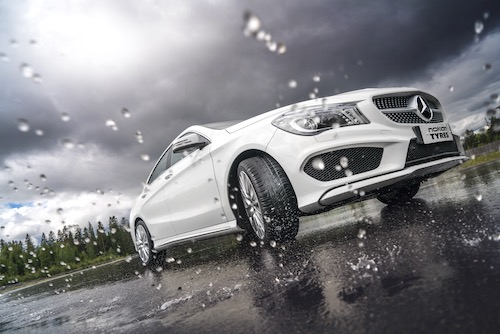If you live in an area where you have winter conditions during the year, you will need to equip your SUV with proper winter tires that are approved for winter driving. If your tires don’t have a winter-approved symbol on the sidewall of the tire, then they are not suitable for winter driving and you should refrain from driving. The well-known M+S marking isn’t sufficient for winter driving as all that indicates is that the tread can handle mud and snow without giving any indication of how well it will perform in these conditions or if the rubber compound will remain soft and agile at low temperatures. The problem with most all-season tires is that they get hard at low temperatures, which is why it is recommended to switch to winter tires once the temperature drops below 45°F.
When you have real winter conditions with low temperatures, snow, ice and slush, you will need proper SUV winter tires to tackle these conditions. All-season tires will get very hard at low temperatures and will not be able to provide the grip that you will need to stay safe while driving. Don’t be fooled by the fact that SUV tires sometimes can look quite rugged and give the impression that they can handle any terrain easily. You need SUV winter tires to handle winter conditions. The pure fact that the rubber compound hasn’t been optimized for cold weather and you will lose almost all the grip, especially on ice, should deter you from driving during these conditions without winter approved tires.
For driving on icy surfaces you should optimally use SUV studded tires. They will be able to provide you with the grip and stability that you will need to have, to be able to drive safely. The metal studs dig into the ice to give you the necessary grip for safe driving. The tread is also optimized to be able to handle snow as well as slush. With slush you also have to be careful that your car doesn’t lose control due to slushplaning, which is winters equivalent to aquaplaning and happens when you have snow mixed with water.
You also need to make sure that the tires are in good condition, that there are no tears or cuts on them. Check that the tread depth is above 5/32 inches and that the tires are correctly inflated. With lower temperature the pressure goes down, so it is important to check the tire pressure regularly. If you drive with a fully loaded vehicle, you should check it. Low tire pressure decreases the grip and stability. The wear of the tires will increase if you have low tire pressure, causing you to replace them prematurely. Another negative impact is that the rolling resistance increases, which causes your SUV to consumer more gasoline, which can be quite costly with today’s gasoline prices. Try to check the pressure when you stop at the gas station.
For more SUV tires related information, visit: www.nokiantires.com
